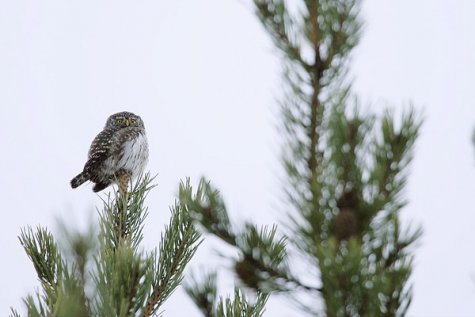Calling owls - pygmy owl
Photo: Arne Ader
Nature sound: Veljo Runnel
Translation: Liis
Pygmy owl
Pygmy owl Värbkakk Glaucidium passerium
March is the owl calling period. We start the introductions with the smallest one, heard in mornings and evenings and often even in mid-day, sounding its different whistles. Its secretive night-time habits is a protection against larger raptors.
The sexes have similar plumages the year round; the female bird is quite a bit larger. The plumages of the juveniles pass markedly different development phases but it is simply not possible to confuse a pygmy owl with any other owl. In size it is comparable to for instance thrushes. The eyes are large and yellow, the eyebrow stripe light, flight image soft and billowy. It often perches in wait at the border between open areas and forest or coppice, sometimes quite openly on a dried branch stump or in a spruce top. A pygmy owl stock-still in place need not be seen in spite of a very visible perching place. Not being particularly shy of humans they allow their doings to be observed.









